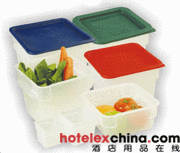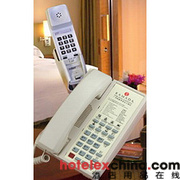
Consumer dining trends tend to be more volatile than lodging trends. Recognizing this, hotel managers have made some significant changes in the way they offer food-and-beverage service to their guests. The traditional three-meal, all-purpose restaurants and roomservice are disappearing. Taking their place are self-service kiosks and grab-and-go concepts that provide quick service for in-house guests. These changes help explain recent changes in hotel food-and-beverage department revenues, expenses and profits.
To understand recent trends in lodging food and beverage sales, we analyzed the financial performance of hotel restaurants, lounges, roomservice and catering departments for the period 2010 through 2016. The information came from a same-store sample of 705 full-service, convention, all-suite, select-service and resort hotel operating statements taken from the firm's Trends in the Hotel Industry database. In 2016, the hotels in the sample averaged 365 rooms in size, 76.5 percent in occupancy, and an average daily rate of $201.99.
Out of the Room
From 2010 to 2016, total food-and-beverage department revenue increased at a compound annual growth rate of 4.5 percent. This is less than the 5.6 percent CAGR in rooms revenue, and 5.2 percent CAGR for total hotel operating revenue during the same period. With total revenue increasing at a greater pace, food-and-beverage revenue measured as a percent of total revenue has declined from 30.4 percent in 2010 to 29.2 percent in 2016. Being a same-store-sample, this reflects changes in existing operations. Given the recent proliferation of new limited- and select-service properties, the decline in food-and-beverage revenue as a percent of total industrywide revenue would be more dramatic.
In 2016, six of the eight food-and-beverage revenue categories tracked by CBRE were greater than the nominal dollars achieved in 2010. The two sources of revenue that still lag are in-room dining and minibar. It is interesting to note that both of these sources of revenue are earned while guests remains in their room. The decline in revenue from in-room sources is consistent with the emphasis hotel brands have placed on new food, beverage, workspace, and socializing concepts in the lobby area.
On a percentage basis, the greatest increases in food-and-beverage revenue since 2010 have come from audiovisual rentals and service charges. Audiovisual services are frequently provided by a third-party vendor, and therefore less negotiable by hotel management. Service charges are frequently mandatory components of employee compensation, and therefore cannot be reduced or eliminated.
Revenue from hotel restaurants and lounges (venues) has grown at a CAGR of 4.9 percent from 2010 to 2016. Beverage venue revenue (5.4 percent) has grown at a greater pace than food venue revenue (4.7 percent). The new self-service concepts have simultaneously reduced traditional restaurant sales and reduced the average food check per customer.
During the early stages of the recovery, it was banquet revenue that led the growth in food-and-beverage revenue. At that time, hotels reached out to local sources for catering business that filled the event space left empty by the lag in group demand. Now, during the later years of the recovery, group demand has started to return, but has yet to fully recover. This apparently has thwarted the recent rate of growth in banquet revenue.
Of the various four property types tracked by CBRE that offer restaurants, lounges and catering, the greatest gains in food-and-beverage revenue have occurred at resort and convention hotels. Guests at these hotels are more captive to the events, services, and amenities occurring on-site. Therefore, these property-type categories have a greater likelihood of capturing in-house food and beverage patrons. Full-service and all-suite hotels, on the other hand, cater to more transient demand that has a higher propensity to leave the hotel to find a restaurant or lounge.




![[Intelligent Hotel Lock] YGS-9901B](https://zeimg.jiagle.com/media/2016/11/24/6037221479970596.jpg!180)





Service Hotline
Work Time:Mon-Fri 9:00-18:00
UTC+8

Sinoexpo Digital Platform
Copyright 2006-2024 Shanghai Sinoexpo Informa Markets International Exhibition Co., Ltd. All rights reserved
沪ICP备05034851号-77
 沪公网安备 31010402000543号
沪公网安备 31010402000543号